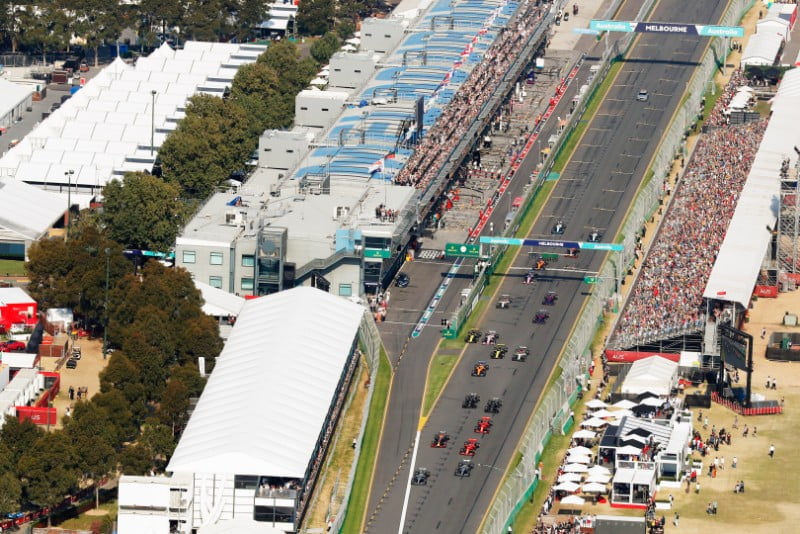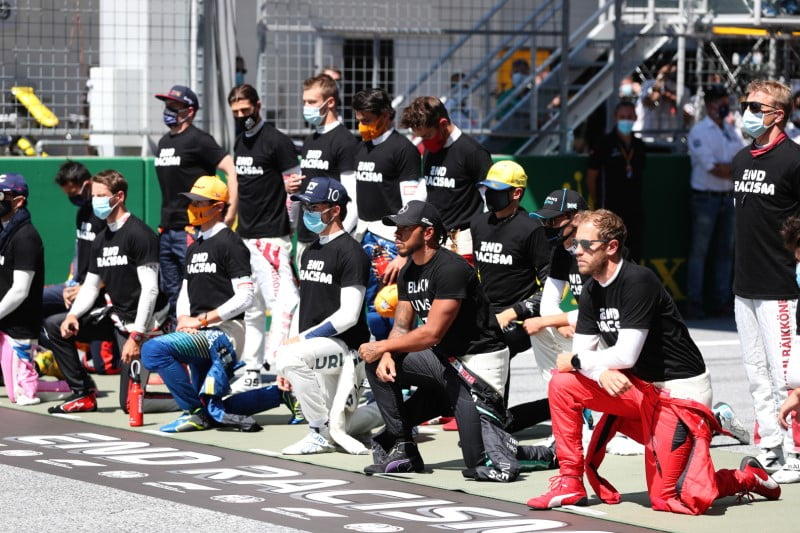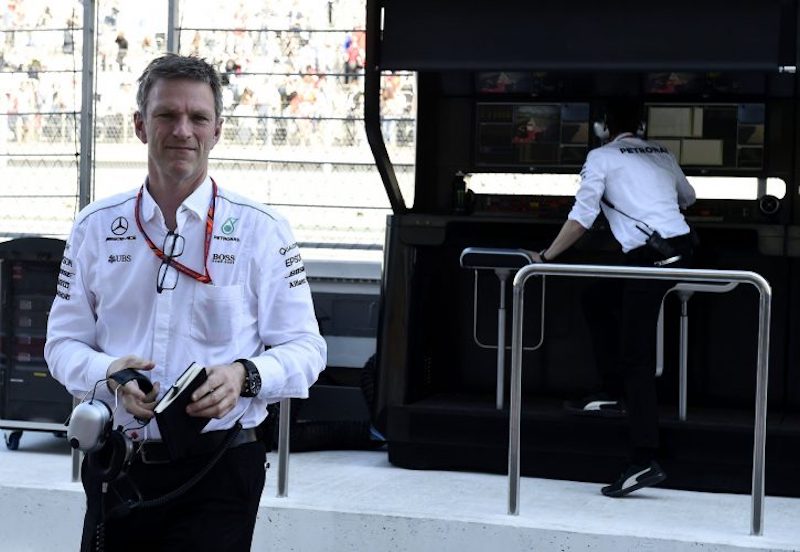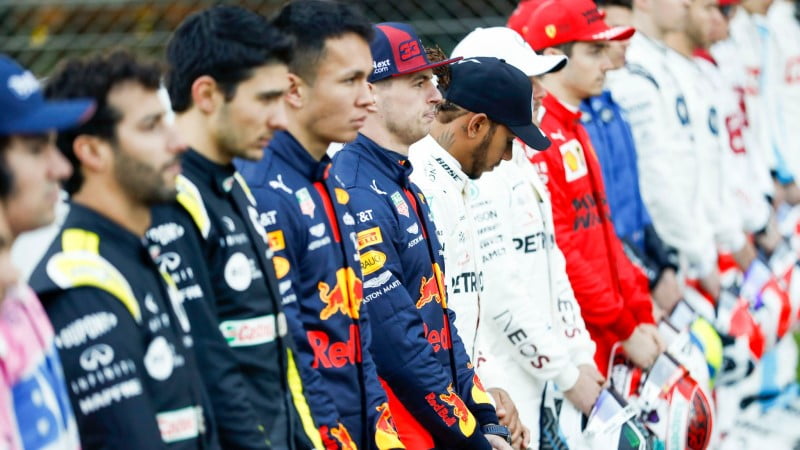A one-year contract extension with Mercedes is Valtteri Bottas’ best-win of the 2019 Formula 1 Season. In Australia, he showed why critics, fans and Mercedes should retain faith in his talent. Here’s also why the 2019 Australian Grand Prix wasn’t an outlier.
The Albert Park Circuit is an outlier — that was the one statement that was stated and overstated over the weekend of the 2019 Australian GP. From a circuit characteristics point of view, we would agree. But the performance and aggression of Mercedes driver Valtteri Bottas was no outlier. Nor was Max Verstappen’s scoring of Red Bull Racing’s first podium with their new power unit partners, Honda. And of course, Ferrari’s lack of pace — that wasn’t an outlier either. All in all, the opening round of the 2019 Formula One Season served as a fine start to the 21-race long season.
Bottas: ‘I’m Going To Beat Everyone This Year’
The 2018 Formula One season was brutal for Bottas; the Finnish driver went winless. At first, it was ill-luck, but then team orders and a string of bad results made almost everyone sit up and wonder if Mercedes should replace Bottas with their prodigy Esteban Ocon for 2019 itself. However, after an introspective winter, as admitted by Bottas, the Mercedes driver displayed a rare form of aggression at this weekend’s race. (Read: Bottas’ Best Win Of F1 2019)
In qualifying, he claimed provisional pole but was eventually beaten by team-mate Lewis Hamilton by a tenth. In the race, he shot past Hamilton at the start and built up an unassailable lead to eventually score maximum points from the race. It would be safe to say that Bottas led the boredom of the first half of the race quite perfectly. Admittedly, his only real opponent this weekend was Hamilton, but the reigning World Champion too had no match to Bottas’ race pace.
Alfa Romeo: The Best Team Of 2019 Already
It would be imperative to discuss the aggression shown by Bottas, at least during two visibly public moments. First, in the closing stages of the race, when the team informed him via the radio that they wouldn’t pit him again (even though he had the gap to P2) in the bid to score the fastest lap of the race and earn the extra championship point that would come along with it. Bottas, while agreeing with the decision to not pit, made it very clear to the team that he would aim for 26 points, the maximum, and not settle for just the race win. Given his otherwise demure behaviour, it was good to hear Bottas’ aggression and intention.
The second instance was after the race, on the in-lap. The Mercedes pit-wall exchanged congratulatory messages with their winning driver, who while congratulating the team back, chose to let off some of the steam by using some expletives in a very diplomatic fashion. If this is Bottas 2.0, the Drivers’ Championship this season could be fought between more than two drivers. In fact, if the domination showed by Mercedes continues through the season, a Bottas vs Hamilton might be the only fight left for fans to contend with.
Bottas’ winning margin over Hamilton was a whopping 21 seconds — a margin higher than any winning margin from the 2018 Formula One season. For those not hoping for another year of Mercedes domination, this number does not bode well. However, after the race, Mercedes revealed that damage on the floor of Hamilton’s car compromised his race pace; apart from an early pit-stop that was triggered by Ferrari’s Sebastian Vettel.
Welcome to the podium
Honda’s return to Formula One has been painful, expensive and embarrassing. Let’s not be mistaken, the hybrid turbo regulations are probably the most sophisticated and complex of all time. Ferrari took a few seasons to catch up with Mercedes, while Renault and Honda are yet to get there. Red Bull Racing’s decision to switch to Honda power was calculated and risky. In fact, it cost them the services of Daniel Ricciardo. However, even the team wouldn’t have dreamed of scoring a podium at the first race of the season.
F1 2019: What Success Could Mean For Each Team
Apart from Honda’s reliability and power, credit should be given to Max Verstappen for stitching together a qualifying lap that saw him split the Ferraris of Vettel (P3) and Charles Leclerc (P4). The young Dutchman, who has often taken time to settle into a new season, drove a composed race where he managed to easily overtake Vettel for third place and challenged Hamilton for the second. Verstappen’s teammate Pierre Gasly struggled to recover from a poor qualifying result that saw him eliminated in Q1. Red Bull Racing chose to run their drivers just once in the session — Verstappen, who was 0.14 seconds faster than Gasly, made it through, while Gasly couldn’t.
Expectedly, Red Bull ran Gasly on an inverse tyre strategy (medium-soft) but failed to finish higher than P11. Ironically, Gasly spent much of his race staring at the rear of Toro Rosso driver, Daniil Kvyat, as he struggled to find a way past.
Ferrari need to stop sandbagging
This was the general question throughout the weekend. When would Ferrari turn up their performance and show their true pace? The pace that had everyone in awe during pre-season testing. But as it then turned out, the Ferraris lacked pace — in qualifying and in the race. After being out-qualified by Mercedes by 7 tenths, Ferrari fans were quick to point out how the qualifying story and timings were similar to the 2018 Australian GP Then too, Ferrari had a wide gap to Mercedes in qualifying, but they managed to win. However, in the 2019 edition of the race, Ferrari’s lack of pace was shocking as they finished nearly 60 seconds behind the winning Mercedes of Bottas. In a race that was 58 laps long, that’s nearly a 1 second a lap off the pace.
Sebastian Vettel, the first of the front running drivers to pit, struggled for pace on his second stint. He couldn’t battle against Verstappen and almost fell into the clutches of his rookie teammate, Charles Leclerc. In the aftermath of the race, social media was abuzz about Ferrari’s use of team orders to instruct Leclerc to not overtake Vettel. Although unfair to many, it is a sensible decision by Ferrari to maintain status-quo in favour of their senior driver.
Ferrari’s Masterstroke With Mission Winnow
Leclerc, who made an error in Q3 and was out-qualified by Verstappen, ran a decent race to finish fifth. The fireworks that many Ferrari fans were expected from Leclerc weren’t meant to be in Australia. But it’s a long season ahead of us and Leclerc will only get better, faster and more lethal as the season progresses. In general, Ferrari should question their early decision to pit Vettel. Did this cost the team late-race performance due to tyre wear? The track conditions were hotter — did this impact the Ferrari more than their rivals? Also, the team had an extra pit-stop available with Leclerc in the closing stages of the race (28 seconds to Magnussen). Should Ferrari have pitted him for fresher tyres in an attempt to claim the point for the fastest point from Bottas? Let’s see if the extra point comes back to bite Ferrari-Leclerc later in the season.
Magnussen leads mid-field
As expected, the mid-field was where the action was — especially in Q1 of qualifying. The entire field (excluding the Williams) was split by only 1 second and drivers lost out on entry in Q2 by less than a tenth of a second. In fact, if one has got limited time to follow Formula 1 over a particular weekend, we would recommend watching Q1 over all other sessions!
Although just one race in, the current classification could be summarised as the top-3, followed by Haas who are then followed by the rest. The Haas drivers had an unexpected gap (3 tenths) to the rest of their mid-field rivals in qualifying. In the race, Magnussen drove well to score P6, while Grosjean had to retire mid-race due to a left suspension issue. As strange as it may sound, pit-stop issues came back to haunt Haas in Australia – they had delays with both their drivers. This is despite the team’s claim to have practiced more than 300 pit-stops in the build-up to this season.
Renault’s Nico Hulkenberg finished seventh, but for the French team, this would be a bitter-sweet weekend. Their star driver, Daniel Ricciardo, was out-qualified by Hulkenberg. In the race, Ricciardo lost his front wing and suffered further damage after a freak case at the start. In the attempt to overtake Racing Point’s Sergio Perez, Ricciardo put two wheels on the grass only to find a patch of uneven tarmac/grass that he hit at high speed. The Australian driver had to pit on the opening lap for repairs and face subsequent retirement. Additionally, Renault faced an early-season embarrassment when Carlos Sainz Jr’s Mclaren retired due to a power unit failure just 13 laps into the race. Is Renault carrying their reliability issues from 2018 into this season?
Are Formula 1’s Mid-Field Teams Unambitious?
Raikkonen, Stroll, and Kvyat scored points from P8-P10. In fact, Stroll and Kvyat benefitted from running the reverse tyre strategy (medium-soft) and were able to jump their better-qualified rivals (Norris, Albon, Giovinazzi and Perez) who ran the regular soft-medium strategy. For Stroll, a point in his debut race with Racing Point would go a long way into proving a point (or two!) to his critics. Also, were Alfa Romeo using Giovinazzi’s race to score a better result for Raikkonen?
In all, 8 out of the 10 teams scored points in the 2019 Australian GP. Expectedly, two of Formula One’s past giants, Williams and Mclaren, failed to score any points. This is despite Lando Norris’ surprise qualifying performance in P8. However, it would be too early to judge Mclaren’s relative pace given their retirement with Sainz and choice of the wrong tyre strategy for Norris. Although, Red Bull-Honda’s podium in the 2019 Australian GP will hurt Fernando Alonso, Daniel Ricciardo, and Mclaren – in that order.
How did the new rules fare?
The aero changes did appear to make the following cars look easier, but in this regard, the Albert Park circuit isn’t the best circuit to judge the rules on. Sergio Perez, who earlier praised the rules in pre-season testing, was one of the first drivers to admit the difficulty in overtaking during the race. Let’s see how things unravel in Bahrain.
The extra point rule for the fastest lap of the race did throw up some entertainment. Bottas was hell-bent on scoring the extra point and was trading fastest laps with Verstappen towards the end of the race. Given that two of the series’ high-profile drivers, Hamilton and Vettel, suffered from car issues, we expect more drivers to chase the extra point in the race to come.
The results of the 2019 Australian Grand Prix wasn’t what many would have expected while filing in their fantasy results. Let’s hope that this uncertainty stays with us through the season. After all, Formula One faces strong competition from the ever-entertaining and unpredictable Formula E and MotoGP.
This post was first published on Firstpost














